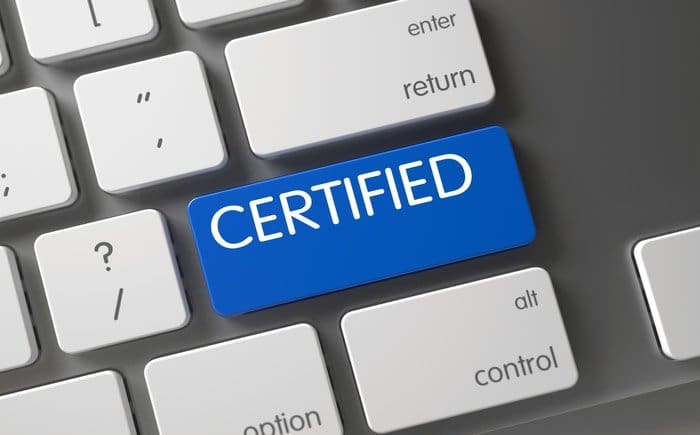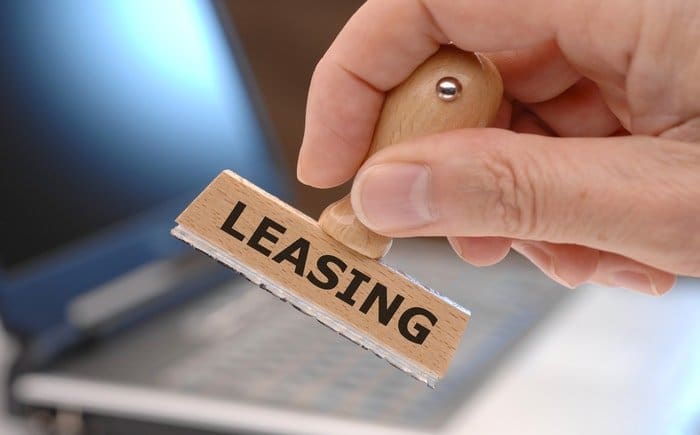Every day millions of pet lovers think to themselves:
“I wish I could spend all day playing with my pets.”
Martin Burt and his wife started Companion Keepers because of their love for animals. These successful business owners are going to share how to start a pet sitting business for less than $1,000.
If caring for animals sounds like your dream job, we’re going to show you how to build a strong client base without any pet sitting or small business experience. Get ready to get all the tips, tools, and resources you need to start a successful pet sitting business.
1. Understanding Pet Sitting

You might be wondering if pet sitting is right for you or if you’re even cut out to run a small business. With the help of Martin, we will give you the tools and knowledge to make this important decision and get a head start.
The average cost for pet sitting ranges from $20-$30 per day and $45-$75 per night. Individual pet sitters can make $4,000 a month or more, which can grow even more as you expand your business and hire additional workers.
Pet sitting offers a level of flexibility that few other types of businesses can match. You can choose to work full-time or part-time and can even start as a teenager.
Let’s get into what you need to know to decide if starting a local pet business is a good fit.
Experience
Working as a pet sitter for an established company before going out on your own can help you get a feel for the work involved and how to manage different pets, sitting circumstances, and employees.
However, being a passionate pet owner can suffice if you have an entrepreneurial spirit and do your research.
Martin and his wife didn’t have any previous experience with pet sitting or small business, but they were driven to create a safe pet care environment in honor of their passed beautiful Persian, Delilah.
While they may have lacked experience, they sure didn’t lack drive. They spent an entire year researching how to own and operate a small business and pet sitting company. And most of this research was done at the library!
Fortunately, there are tons of online resources nowadays, and we’ve already taken care of the heavy lifting for you. Here are a few to get you started:
- Info on how to start a new business from the U.S. government
- Tips for first-time entrepreneurs
- The best pet sitting companies, according to ConsumersAdvocate.org
- Advice on how to run a successful pet sitting business by Pet Sitters International
Being An Entrepreneur

Starting a business can be one of the most challenging and rewarding career moves of a lifetime. It takes planning, guts, and a whole lot of time and effort.
After taking a deep dive into the world of business ownership and weighing their options, Martin and his wife realized that entrepreneurship was right for them. As Burt explains:
He goes on to explain some of his key requirements for business ownership:
The start-up guides by Entrepreneur and Business News Daily offer step-by-step instructions on how to get started.
The Small Business Administration (SBA) is also a great resource for those looking to become entrepreneurs in the United States, with information on registering your business, funding, and more.
2. Choose Your Target Market
Because there are so many pet varieties, each requiring different types and levels of care, selecting which types of pets your company will and will not sit for is a core business decision.
This choice should be based on your knowledge, experience, and preferences, as well as your desired workload and price points.
You can choose to take on more care-intensive pets, like ferrets and large birds, or stick to lower maintenance animals like cats and guinea pigs. Here are care guides for some of the more common pets to help inform your decision.
To specialize or not?
Finding a unique way to position your business is a great way to stand out from the competition and command higher prices.
One way to do this is to create a specific type of pet sitting business, like a pure dog sitting business.
Taking a leap of faith, Martin and his wife decided to transition their business, shifting from providing services for both cats and dogs to a cats-only pet care provider, effectively reducing their number of potential clients. As Martin explains:
They were the only local pet sitting company in this space. The risk paid off, and their specialty pet sitting business flourished.
3. Licenses and Certifications

Look, no one likes paperwork, but doing the due diligence to get your business up and running is key to its success. One of those steps may involve getting a business license.
Pet sitting business license requirements vary by state, so make sure to check your state/city websites for more information.
Exams and Courses
Beyond licensing, you may want to consider a pet sitting certification as an extra credibility boost for your business.
The NAPPS Certification Course covers a wide range of topics, from pet first aid to business management. This is a good option for someone who wants to deepen their knowledge of business and pet care and build confidence in their pet-sitting abilities.
Another option is the CPPS-Certified Professional Pet Sitter® Exam. This certification is for people who already have the know-how and want to prove their expertise to clients.
In all, certifications can be a learning tool and/or give you an edge over the competition.
4. Select a Location
Figuring out where to locate your pet sitting business is a big decision. Do you work from home or rent an office? Board animals or make house calls? Or do a combination of the two?
With so many questions to answer, let’s take a look at how Martin and his wife set up their business.
Home Office
Martin describes the Companion Keepers office setup:
Nowadays, working from home is much more common and accepted. Converting part of your home into an office can help cut costs since you don’t have to rent an office space, which is especially important for a start-up.
Check out these resources on creating your ideal home office space:
- Watch this video to learn more about transforming part of your home into office space
- Set up your home office like a boss with these tips and tricks
- Don’t forget to optimize the ergonomics of your office space for comfort and productivity
Renting and Leasing Retail

If you do want to rent an office space for a more professional feel, make sure you consider its location in terms of your clients, team, and any amenities you want close by. It’s also important to figure out your budget and stick to it.
Online platforms like OfficeSpace let you browse potential business locations from your own home. You may also want to get the help of an expert for your search.
Personal Visits
With half of their house functioning as an office, there wasn’t much room left for pets. Martin and his wife decided to make pet care visits to the owner’s home as part of their service offerings.
While this option has the benefit of a less chaotic home or rented space, it does come at a cost.
Martin explains the tradeoffs of heavily relying on a car as part of your business operations:
As your client base grows, so does your car mileage. In Martin’s case, the company profits more than offset these time and money costs.
Alternatively, if you have the space, pet sitting in your home can save tons of time and help to reduce costs.
5. Make a Plan
Whether you create a plan or not can make or break new businesses. Read on to learn exactly what you need to do to develop a solid foundation for your pet sitter business to thrive.
Name The Business
A solid business name can be the difference between gaining a new client and being forgotten. When selecting a name, it should be clear that it is representing a pet sitting company without being too wordy or difficult to remember.
The name of Martin and his wife’s business, Companion Keepers, is short, sweet, and to the point. You can also test some name ideas on a focus group of family and friends to help find the perfect one.
You only get one shot, so take your time and be thoughtful in your decision.
Here are some more tips for naming your business.
Create a Business Plan

After finding the perfect name, it’s time to sit down and make a plan. A business plan was the missing piece from Martin and this wife’s start-up venture. He states:
Martin hits the nail on the head with his observation. Business plans help you focus, set goals, and stay organized, which is necessary to effectively scale your business.
Business Planning 101
Business plans generally have the following elements:
- Executive summary
- Vision and mission statements
- Company summary
- Market analysis and marketing strategy
- Financial plan and forecast
- Competitor analysis
Business Plan Templates
Fortunately, there’s no need to start from scratch. Here are some free templates to get you started!
- Sample template for pet sitting companies
- Pet sitting business plan template geared towards raising capital
- Start-up business plan template
- Business Plan Guide courtesy of the U.S. Small Business Administration
- Business Plans customized for each state
Goal Setting
Martin also recommended setting goals early on in the process to help guide your pet sitting business in the right direction.
One of the most commonly used tools for goal setting is the SMART goal framework, which emphasizes creating goals that are Specific, Measurable, Achievable, Realistic, and Timely.
When setting your revenue and other goals for the year, don’t forget to consider the seasonality of pet sitting. Plan for busier periods during the summer and slower business during the winter.
For example, at Companion Keepers, they take a break in January to regroup and plan for the following year.
Insurance
Everyone would like their business operations to always run smoothly. However, in reality, issues are going to come up from time to time. Insurance and contingency planning are a must for pet sitting businesses. Martin and his wife have had to handle their fair share of challenges. As Martin describes:
We have dealt with house break-ins, floods, sick or terminally ill pets, and pets that pass away when their moms and dads are away. The responsibility can weigh on you.
To help you build a stable business that caters to pet owners, he recommends creating a financial cushion over time to prepare for the unknown. Also, creating guidelines for how to handle difficult situations like the death of a pet can help you and your team take on these challenges more effectively and consistently.
To make sure your pet care business is protected, you may want to consider purchasing insurance. Insurance companies like Trusted Choice and Veracity Insurance Solutions offering affordable liability insurance related to animal care. Small business insurance can also provide coverage for other types of financial losses.
6. Funding

Luckily for you, pet sitting businesses don’t need a large amount of upfront investment. That being said, you’ll still need to decide whether to self-finance your small business or try to find investors. First, let’s take a look at how much money you’ll need to get started.
Estimate Costs
One of the perks of starting a pet sitting business is the low initial costs. Martin and his wife hired an accountant who cost $1,000 per year and an attorney who drew up a pet care contract for pet owners to sign that cost around $600. The remaining costs for a business phone line, advertising, and office supplies were minimal at first.
Other than that, the main costs for Companion Keepers were related to their car. These can really add up over time. Martin explains:
The mileage plus wear and tear on your car annually is a big expense. It’s not uncommon to put 100 miles a day on your car when making pet visits on busy days. Depending on gas prices, which at times were as high as $3 a gallon, plus averaging out the cost per mile burning your car could mean you need a newer car in a few short years.
Pet sitting business start-up costs can be higher or lower than those of Companion Keepers depending on how you decide to set up your pet business.
For example, renting out office space for your pet business will add a significant monthly expense, while providing pet care services from the comfort of your own home can help cut down on car wear and tear.
The US Small Business Administration offers a start-up cost estimator to help you plan out your business expenses.
Here are the main cost categories to factor in when starting your pet sitting business:
- Office space (varies depending on location)
- Car (including gas plus wear and tear)
- Pet equipment (food, toys, etc.)
- Accountant: about $1,000 per year
- Lawyer: about $600 to create the initial pet care contract
Pet Sitters International also offers a free pet sitter start-up costs checklist to help you estimate your business expenses.
Personal Investment
If you have a reliable car and money in the bank, it’s possible to start a small business that provides pet sitting services without initially going into debt. This was the route Martin and his wife took. He describes how they managed to found a pet sitter business without debt:
Becoming a fully self-started business owner is possible but may require more sacrifices and effort upfront. Next, we’ll go over an alternative path for starting and to help you build your local pet sitting business.
There are also several business credit cards geared towards start-ups with perks, like not requiring a personal guarantee and a 12-month intro 0% APR. Before applying, you can first check your credit score for free through Experian.
Finding Investors

An alternative option for starting a pet business is to get funding from outside sources. You can apply for a loan from a local bank, raise capital from friends and family, or seek funding via an online platform.
Make sure that you understand the terms of the loan and that the requested amount is based on your cost and revenue projections from your business plan.
The SBA also helps small businesses to get loans.
7. Develop a Marketing Strategy
Online presence is the number one way to attract potential clients in today’s world according to Martin. They also receive referrals from local veterinarians and former clients. Occasionally, Martin will buy Google or social media ads, but they rely most heavily on organic website searches for growing their business.
Gig Workers
Gig pet sitting businesses like Wag and Rover can make it difficult for independent pet sitter companies by undercutting the market. As Martin explains:
While gig pet sitters are barely getting by with their bottom-of-the-barrel pricing, a true petcare small business has to get creative and set themselves apart to be successful.
Read on to find out how.
Technology
In addition to leveraging pet owner customer loyalty through referrals, using technology is integral for small business owners in growing their sitting business. Martin encourages pet sitters to seek out these solutions:
The following platforms can help your business operate like a well-oiled machine.
- FreshBooks helps to simplify invoicing
- DocuSign can make your contracting processes operate more smoothly
- Mailchimp offers an integrated marketing platform that allows you to reach potential customers more effectively
- GoCo uses the cloud to streamline human resource services
8. Assemble a Team

As your pet service business grows, you may want to consider hiring people to help out with pet care.
Hiring Help
If he could go back in time, the number one thing Martin would do differently is to hire sooner.
Based on how many pet owners you are servicing and your budget, you can choose to hire full-time or part-time pet sitters wh0 you can train based on your pet care approach and guidelines. This will increase your ability to service more potential clients and grow your revenue.
Depending on your location, you may be able to find potential employees through word of mouth, a community job board, or an online job board like Indeed. Workers who are passionate about animals are a must!
Check out the 7 Cs and these recruiting strategies for more info on how to hire great employees.
Remote Workers
As the remote worker community increases, it’s easier than it’s ever been to find a virtual assistant for day-to-day office tasks. An assistant can take care of the small stuff so you can focus on growing your business.
Martin warns that burnout is inevitable to people who are fearful of hiring. So once your business starts to take off, get out there and assemble your dream team!
9. Education & Networking
Martin’s final piece of advice for aspiring pet sitters is to never stop learning. There are tons of resources out there for small business owners, such as mentorships, online classes, and networking opportunities.
Mentorships
Having a pet sitter mentor is a great way to get you started, and they can act as a support system as you grow. Pet Boss Nation has a great mentor program for those looking to get into the pet industry.
Martin encourages new business owners not to try to reinvent the wheel and to ask for help when needed. Especially if you’re new to the industry, a mentor can be an invaluable resource and help show you the ropes.
Networking

Platforms like Skillshare and Universal Class offer courses specifically for pet sitters where you can hone your skills and learn new tricks of the trade.
Business networking sites can help you make connections to both learn and grow your business. LinkedIn is a widely used platform that helps you to expand your network based on who you know, and the 100AM Networking app is great for networking events and managing business cards.
Conclusion
Want to stay up-to-date on all the latest tips and tricks from top sitting experts? Then check out Barxie and the pet sitting business coaching blog Jump Consulting.
Now that you’ve gone through our pet sitter business guide, you have the know-how to answer the following questions:
- Is a pet care business right for me?
- What is my ideal business set-up?
- What do I need to start a pet sitting business?
- What are the costs of starting a pet care business?
- How can I manage the challenges of running this type of business?
- What strategies can I use to grow my pet care business?
Let us know in the comments if you have any questions, and don’t forget to check back in for more business how-tos!




